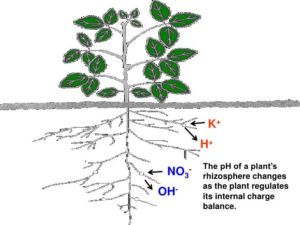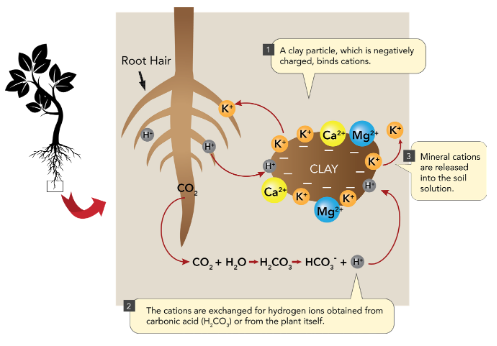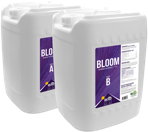PH
Share this Post
RHIZOSPHERE PH ANDNUTRIENT AVAILABILITY
UNDERSTANDING RHIZOSPHERE pH
The rhizosphere is the area of soil directly surrounding the plant’s roots. Root secretions and microorganisms affect the soil chemistry and biology of this area. Compounds found in root exudates consist of water, amino acids, organic acids, carbohydrates, proteins and vitamins. Many of these compounds serve as food sources for microorganisms in the region, making the rhizosphere an extremely bioactive environment. This bioactivity changes the pH of the area, which in turn affects the nutrient solubility and availability to plants. In order to fully understand the rhizosphere environment, we must understand the chemical changes that occur as a result of plant root and soil interactions.
WHAT IS pH?

Ionic compounds1
The pH of fertilizer, growing media, and the root zone shape the ability of nutrients to get into plants and drive their growth and development. Potential hydrogen, or pH, is a measure of the concentration of hydrogen ions, or H+. Changes in rhizosphere pH, which can occur when nutrient solutions or water are fed, are associated with anion and cation uptake and release of H+ and hydroxyl (OH-) ions. The dissociation of H+ ions causes an increase in soil pH and reassociation causes a pH drop. Soil acidity increases when H+ producing processes exceed H+ consuming processes. Roots release H+ to balance internal charge when cation uptake exceeds anion uptake, and release OH- when anion uptake exceeds cation uptake (Figure 1). The differential uptake of cations and anions is related to the necessity of plant root cells to maintain pH levels close to neutral and take in specific nutrients.
SOLUTION pH VS SOIL AND LEACHATE pH
The pH of a nutrient solution is not a predictor of the pH of soil or leachate. Soil or growing media has its own pH and the ability to buffer changes in pH caused by addition of nutrient solutions. As the buffering capacity of a soil increases, so does its ability resist such pH changes. When a nutrient solution is added to soil, it interacts with the pH of the growing media and rhizosphere. The pH of any leachate is a product of this interaction. Nutrient solution at a lower pH allows for maximum micronutrient availability, as well as macronutrients with low solubility. When a low pH nutrient solution is applied, its pH rapidly changes as it interacts with the soil. This creates a solution pH that maximizes nutrient availability in the root zone while preventing damage due to low pH. The form of nutrients fed to a plant can also influence pH. Nitrogen is important in the cation/anion balance because it is the nutrient taken up in the largest amount by plant roots. When nitrogen is fed in the form of nitrates (NO3-) the pH of the rhizosphere will increase due to the efflux of OH-. At a lower pH, availability of micronutrients is higher, with the exception of molybdenum. Availability of nitrogen and phosphorus is decreased at lower pH, and increases as pH increases, up to 7.0. Providing nitrogen in the form of NO3- will increase rhizosphere pH and allow for greater soluble macronutrient availability. Different plant species show different aptitudes for this buffering capacity, and we believe cannabis demonstrates a highly adaptive capacity for variable pH conditions.
BENEFITS OF LOW pH NUTRIENT SOLUTION

Rx Green Technologies’ nutrients have a low solution pH due to the organic acid formulations used. These organic acids also assist with nutrient uptake and availability. Maintaining a lower pH of nutrient solutions has benefits in addition to nutrient availability. Most importantly is the decreased growth of bacteria in hydroponic reservoirs and irrigation systems. Most bacteria prefer environments closer to a neutral pH (6.5-7.0). When provided with nutrients and favorable temperature and neutral conditions, bacteria will multiply exponentially faster than in less favorable conditions. While bacteria can be beneficial in many soil applications, the slime or biofilm produced by bacterial populations can be detrimental to most irrigation systems. Feeding plants with a low pH nutrient solution can slow the growth of biofilm and provide a wider range of nutrient availability. These benefits provide growers with reduced labor inputs and healthier, more vigorous plants.

